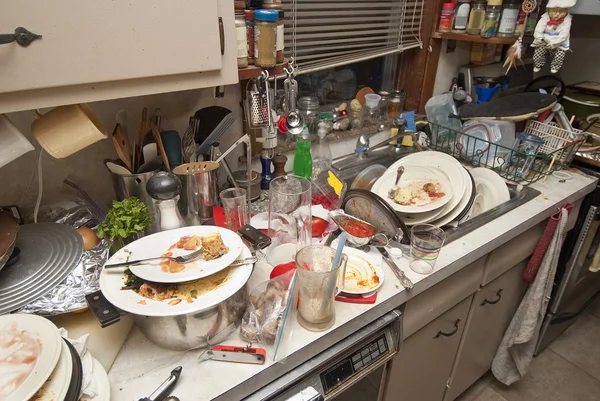Lean: 5S Methodology
Before my mom left for work, she assigned various chores to me and my siblings. She wanted a nice clean house to return to after a long day of work. From these childhood chores, I learned good habits for maintaining cleanliness.
A clean space not only looks nice, but makes everyday life easier:
- With the floors clear, you don’t worry about tripping over things
- With the tables clear, you don’t worry about knocking things over
- With the valuables in a special area, you don’t worry about losing them

We’re all capable of great things, but we let distractions waste our time and focus. I’ve leafed through various self-help books and they all advice contemplating on what is truly important in our lives. After cutting out all the useless noise, we can focus on the important matters
The common advice for improving work efficiency is having a clean work station, because a clear environment is a clear mind. If we know exactly where our tools and resources are, it becomes one less factor to consider. This reallocates extra brain power towards focusing on more important tasks.
What is 5S?
I’ve written about “6S”, “6Ms”, and “5 Whys”, so let’s add one more: “5S”

The “5S Methodology” was developed by Japanese manufacturers for improving productivity. Outside of manufacturing, Japanese aesthetics are known to be simple and clean. As a society, Japanese citizens hold themselves responsible for the maintaining the cleanliness of their city streets. Japanese culture values cleanliness not only for efficiency, but also for spiritual, zen-like satisfaction (“sparking joy”).
The 5S comes from five Japanese S-words that describe the steps towards creating an work area that is efficient and aesthetic:
- Sort (seiri): Remove anything unnecessary
- Does the item get used enough to deserve a spot in the area?
- Are items interfering with the work process?
- Be very selective with what stays on the work station
- Set (seiton): Designate a location for the important items
- Are important items accessible and organized?
- Usage frequency should be proportional to accessibility
- If needed, use tape or labels to designate a space’s intended use
- Shine (seiso): Clean the area
- Straighten and tweak things perfectly into place
- Polish area to be as visually appealing as possible
- Standardize (seiketsu): Have responsibility to keep area clean
- What is the baseline for cleanliness?
- Are items being returned back to their designated position?
- Who are responsible on maintaining the station?
- Sustain (shitsuke): Make it a habit
- Reserve time in schedule dedicated to maintaining 5S station
- Reiterate 5S each time the process or items change
- Alert others when the station deviates from the standard
5S Your Life

This methodology requires discipline and determination to sustain; all members involved must cooperate to maintain a 5S environment. If a single person is unaware or unwilling to adapt to the new standards, it becomes an endless tug-of-war. Imagine the frustration of spending hours scrubbing a floor clean, only to have someone waltzing in with muddy boots. It would seem pointless and futile (like Sisyphus’ struggle), which would be the spiritual defeat of a 5S initiative.

An example for maintaining a 5S kitchen:
- Sort
- Put away special pots in storage
- Dispose of any trash
- Move dirty dishes into sink
- Set
- Put food away food (in fridge)
- Return seasonings to designated location (spice cabinet)
- Store cooking utensils in designated location (near stove)
- Shine
- Wash dirty dishes
- Wipe stove and counters
- Standardize
- Create a baseline of kitchen cleanliness
- Sustain
- Clean the kitchen every time after cooking
5S cannot be performed once and expect to permanently fix the solution. Its a methodology that requires constant vigilance, but will eventually become a lifestyle. By cutting out the trash in our lives (items, thoughts, people), we will only see the important and useful things we want to see.
Throw out your trash or become trash
Hoarders are those who fail at the Sort step, and they don’t throw anything away. Either through distraction or laziness, they let the their area accumulate with trash until it becomes a chaotic wasteland. Their house becomes full of literal garbage, such that its difficult to walk or even sit around.

I believe that people should take pride in their environment; both at home and at work. It is the physical representation of our habits and character that we present to guests or coworkers. It shows respect for both ourselves and those around us.

The habits reflect the kind of person someone is.
What kind of person litters trash wherever they want? And just does whatever is most convenient, without thinking about anyone else or any long-term consequences?
Does this sound like a responsible person?
Comments
Post a Comment